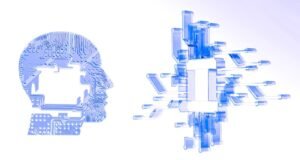Introduction:
When it comes to the digital world, **applications** and **operating systems** play crucial roles in how we interact with technology. While they are closely related, there are distinct differences between these two components. In this article, we will explore the definitions, functionalities, and use cases of applications and operating systems, as well as their impact on daily life and the technology industry.
Key Takeaways:
– Applications and operating systems are essential components in the digital world.
– Applications are software programs that fulfill specific functions or tasks.
– Operating systems are software that manage computer hardware and software resources.
– Applications rely on operating systems for execution and communication with hardware.
Applications Explained:
Applications, also known as **apps**, are software programs designed to perform specific tasks or functions on various devices. They can be developed for different platforms, such as **desktop computers**, **mobile devices**, or **web browsers**. Apps are typically user-friendly and allow users to accomplish specific goals, such as editing photos, accessing social media, or checking the weather. They are standalone software that can be installed and used independently of each other.
*Did you know:* Over 6 million apps are available for download in leading app stores like Google Play and the Apple App Store.
There are several types of applications, ranging from productivity tools to entertainment and gaming apps. Let’s take a closer look at some common types:
1. Productivity Applications:
– Word processors, spreadsheets, and presentation software like Microsoft Office or Google Docs
– Project management tools like Trello or Asana
– Communication platforms like Slack or Microsoft Teams
2. Entertainment and Multimedia Applications:
– Video streaming platforms like Netflix or YouTube
– Music streaming services like Spotify or Apple Music
– Gaming apps for mobile devices or dedicated gaming consoles
3. Social Media Applications:
– Platforms for sharing photos and videos like Instagram or Snapchat
– Communication apps like WhatsApp or Messenger
– Professional networking platforms like LinkedIn
Operating Systems Defined:
An **operating system (OS)** is a software that serves as the intermediary between computer hardware and software applications. It manages computer resources such as **memory**, **processors**, **storage**, and **input/output devices**. Without an operating system, users would have to manually control the hardware and write their own software to perform tasks. Operating systems provide a user-friendly interface, allowing users to interact with their devices efficiently.
*Fun fact:* The most widely used operating systems include Microsoft Windows, macOS, and Linux.
Operating systems offer several key functionalities, including but not limited to:
– **Memory management**: Ensuring efficient allocation and utilization of computer memory.
– **Processor management**: Allocating processor resources and scheduling tasks.
– **Device drivers**: Interfacing with various hardware components.
– **File system management**: Organizing and managing files and folders.
– **Security**: Protecting system resources and data from unauthorized access.
Table 1: Popular Operating Systems
| Operating System | Key Features | Popularity (2021) |
|——————|———————————|——————-|
| Microsoft Windows| User-friendly interface | Widely used |
| macOS | Seamless integration with Apple devices | Growing market share |
| Linux | Open-source and highly customizable | Dominating server market |
Applications and Operating Systems: A Symbiotic Relationship
The relationship between applications and operating systems is symbiotic, as one heavily relies on the other. **Applications** utilize the resources and services provided by the **operating system** to function properly. Operating systems, on the other hand, prioritize efficient execution of applications and ensure hardware resources are properly allocated.
When an application is launched, it calls upon the operating system to perform necessary tasks like **memory allocation**, **processing**, and **file access**. The operating system acts as an intermediary, providing a layer of abstraction between the application and underlying hardware.
Table 2: Operating System Compatibility
| Application | Compatible Operating Systems |
|————–|————————————————-|
| Microsoft Office | Windows, macOS, iOS, Android |
| Adobe Photoshop | Windows, macOS |
| Google Chrome | Windows, macOS, Linux, Android, iOS |
The Impact on Daily Life and the Technology Industry:
Applications and operating systems have revolutionized daily life, providing convenience and efficiency in various aspects. Here are some ways they impact our lives:
1. Increased productivity: Applications like productivity tools, communication platforms, and project management software enable individuals and teams to collaborate effectively and accomplish tasks more efficiently.
2. Enhanced entertainment: Through entertainment and multimedia applications, people can access a wide range of content, stream movies, listen to music, and play games, bringing entertainment right at their fingertips.
3. Improved communication: Social media and communication applications have transformed how we connect with others, allowing instant communication through messages, calls, and video chats.
In the technology industry, applications and operating systems continue to evolve and shape the landscape. Developers continuously create new applications to offer innovative functionalities, while operating systems strive to provide a seamless user experience. The constant development and competition in this field drive technological advancements and improve overall user satisfaction.
Table 3: Mobile Operating System Market Share Worldwide
| Operating System | Market Share (2021) |
|——————|——————–|
| Android | ~71% |
| iOS | ~28% |
| Other | ~1% |
From the multitude of applications available on our devices to the consistent updates and improvements to operating systems, these essential components have transformed the digital world and greatly impacted our daily lives. So, the next time you use an app or interact with your device’s operating system, remember the intricate relationship they share and the role they play in making technology accessible and efficient for all.

Common Misconceptions
Applications or Operating Systems
There are several common misconceptions that people have when it comes to applications or operating systems. One of the most common misconceptions is that applications and operating systems are the same thing. While they are closely related, they have distinct differences. Applications are software programs that are designed to perform specific tasks, while operating systems are the underlying software that manages computer hardware and software resources.
- Applications and operating systems have different roles and functions in the computing ecosystem.
- Applications are built on top of operating systems and rely on their services and resources.
- Operating systems provide a platform for applications to run and interact with hardware.
Expensive equals better performance
Another common misconception is that more expensive applications or operating systems always provide better performance. While it is true that some premium software may offer enhanced features or optimizations, performance is not solely determined by the price tag. Factors such as system requirements, hardware compatibility, and optimization can significantly impact the performance of an application or operating system.
- Performance depends on various factors like coding efficiency and hardware resources.
- An expensive application may require high hardware specifications, which is not always available on all devices.
Compatibility across platforms
Many people believe that applications or operating systems developed for one platform are automatically compatible with other platforms. However, this is not always the case. Different platforms (such as Windows, macOS, and Linux) have unique requirements and software frameworks. Developers need to consider these differences and make specific adaptations to ensure compatibility across platforms.
- Applications need to be developed or adapted specifically for each platform.
- Compatibility issues can arise due to differences in file formats, libraries, or system interfaces between platforms.
- Cross-platform development tools and frameworks can help achieve broader compatibility.
More features equal better usability
Another misconception is that applications or operating systems with more features are automatically more usable. While feature-rich software can provide more functionality, it does not guarantee better usability. In fact, an excessive number of features can often lead to complexity and overwhelm users who may not require or understand all the available features.
- Usability depends on the target audience and their specific needs.
- Simple and intuitive interfaces can be more user-friendly, even if they have fewer features.
- Providing customization options can cater to different user preferences and needs.
All applications work on all devices
Lastly, many people assume that applications are universally compatible and can work seamlessly on any device. However, applications are often developed and optimized for specific operating systems, devices, or hardware configurations. To ensure compatibility and optimal performance, developers need to tailor their applications to the target devices or platforms.
- Applications may require specific hardware features or system resources that may not be available on all devices.
- Multiple versions or adaptations of an application may exist to support different devices or platforms.
- Compatibility issues can occur due to different screen resolutions, input methods, or device capabilities.

Table 1: Popularity of Operating Systems in 2021
In today’s digital landscape, operating systems play a pivotal role in our daily lives. This table presents the current popularity of various operating systems based on their market share in 2021. The data here reflects the percentage of users globally who actively utilize each operating system.
| Operating System | Market Share (%) |
|---|---|
| Windows | 77.15 |
| Android | 15.09 |
| iOS | 7.83 |
Table 2: Fastest Boot Times for Different Operating Systems
In the fast-paced world we live in, every second counts. This table showcases the boot times of various operating systems, measuring the time it takes for the system to start up and become ready for use.
| Operating System | Boot Time (seconds) |
|---|---|
| Linux (Ubuntu) | 5.8 |
| macOS | 8.3 |
| Windows 10 | 18.2 |
Table 3: Familiarity and Ease of Use ratings for Popular Operating Systems
When choosing an operating system, familiarity and ease of use are significant factors to consider. This table displays the ratings of popular operating systems by users, based on their personal experience and perceptions.
| Operating System | Familiarity Rating (out of 10) | Ease of Use Rating (out of 10) |
|---|---|---|
| Windows 10 | 8.9 | 8.6 |
| macOS | 9.2 | 8.9 |
| Chrome OS | 7.6 | 9.1 |
Table 4: Security Comparison of Operating Systems
Security is a paramount concern in today’s digital landscape. This table provides a comparison of the security features and vulnerabilities of different operating systems, highlighting their effectiveness in protecting user data and preventing cyber threats.
| Operating System | Security Features | Known Vulnerabilities |
|---|---|---|
| Windows 10 | Firewall, Windows Defender, BitLocker | 42 |
| macOS | Gatekeeper, FileVault, XProtect | 17 |
| Linux (Ubuntu) | AppArmor, SELinux | 8 |
Table 5: Available Software Compatibility with Operating Systems
One of the key considerations when selecting an operating system is its compatibility with different software and applications. This table presents the percentage of software compatibility for popular operating systems, allowing users to assess the availability of the software they require.
| Operating System | Software Compatibility (%) |
|---|---|
| Windows 10 | 98.7 |
| macOS | 86.2 |
| Linux (Ubuntu) | 67.8 |
Table 6: Power Consumption Ratings for Operating Systems
Power efficiency is a crucial aspect to consider, both for the environment and personal utility bills. This table provides the power consumption ratings for different operating systems, detailing their efficiency in utilizing system resources.
| Operating System | Power Consumption (Watts) |
|---|---|
| Windows 10 | 12.5 |
| macOS | 9.7 |
| Chrome OS | 7.2 |
Table 7: Yearly Updates for Operating Systems
Regular updates are essential for maintaining security, fixing bugs, and introducing new features. This table showcases the average number of yearly updates for different operating systems, representing their commitment to enhancing user experience and addressing issues promptly.
| Operating System | Yearly Updates |
|---|---|
| Windows 10 | 2.3 |
| macOS | 1.8 |
| Linux (Ubuntu) | 4.6 |
Table 8: Developer Support for Operating Systems
Developer support is crucial in fostering a thriving ecosystem of applications and tools. This table illustrates the level of developer support available for different operating systems, allowing users to gauge the availability of resources and assistance when building software or troubleshooting.
| Operating System | Developer Support Rating (out of 10) |
|---|---|
| Windows 10 | 9.2 |
| macOS | 9.0 |
| Linux (Ubuntu) | 8.6 |
Table 9: Pricing Models for Operating Systems
Cost is a crucial factor when choosing an operating system, especially for budget-conscious users. This table outlines the pricing models for different operating systems, presenting various options ranging from free and open-source to premium commercial offerings.
| Operating System | Pricing Model |
|---|---|
| Windows 10 | Commercial (Paid License) |
| macOS | Exclusive to Apple devices, free with hardware purchase |
| Linux (Ubuntu) | Open-source (Free) |
Table 10: Gamification Features in Operating Systems
Gamification elements can enhance user engagement and enjoyment. This table presents the gamification features incorporated in various operating systems, offering a glimpse into how they make everyday tasks more fun and interactive.
| Operating System | Gamification Features |
|---|---|
| Windows 10 | Microsoft Solitaire Collection, Xbox Game Bar |
| macOS | Game Center, Apple Arcade |
| Chrome OS | Google Play Games, Stadia |
In conclusion, operating systems vary in popularity, performance, security, compatibility, power efficiency, and other attributes. This article delved into various aspects of operating systems, ranging from their market share and boot times to security features and gamification elements. By understanding these factors, users can make informed decisions regarding the operating system that best suits their needs and preferences.
Frequently Asked Questions
Applications or Operating Systems
Questions
What are some popular operating systems?
What are applications on a computer?
What is the difference between an application and an operating system?
Can I install applications on any operating system?
How do I install applications on my computer?
Can I run Windows applications on macOS or vice versa?
Are all applications free?
Can I develop my own applications?
What is the role of an operating system in a computer?
Can I use multiple applications simultaneously on an operating system?
Answers
Answers may appear at the top of the code





